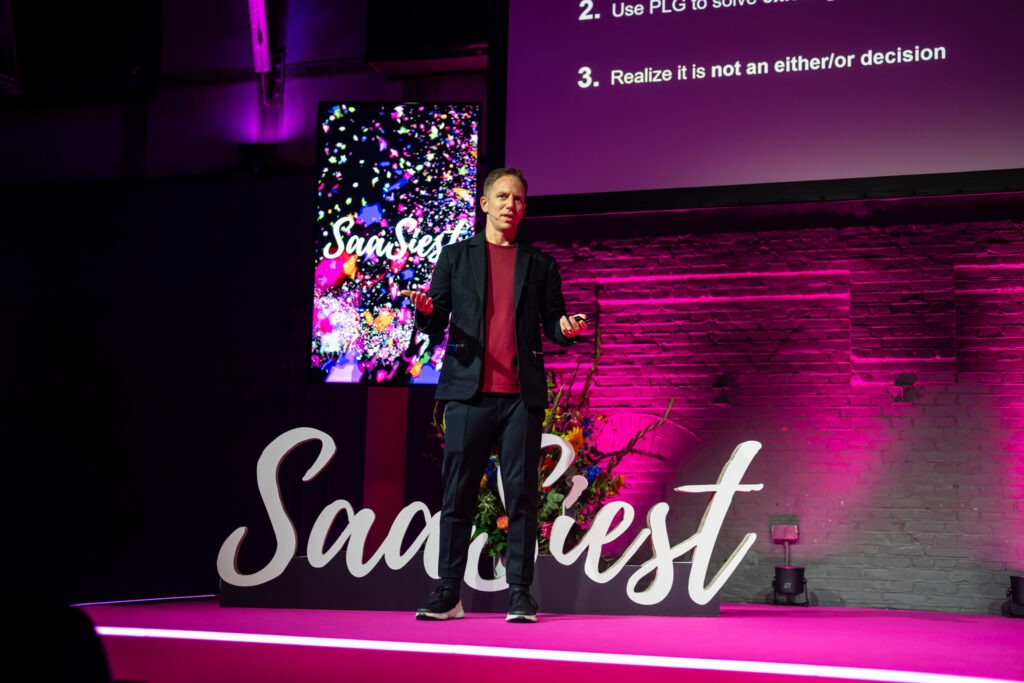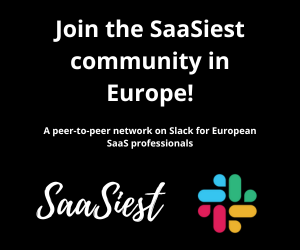
The conversation around product-led growth is everywhere. But for many companies, especially those already relying heavily on a sales-led motion, this buzz can feel either irrelevant or disruptive.
“Why fix what’s not broken?” you might wonder. If your current sales strategy is driving results, what’s the point of tinkering with something that works? The answer lies in the fact that the market is changing. Vincent Jong, Chief Product Officer at Dealfront, predicts that within 10 years, successful SaaS companies will need some level of PLG integrated into their strategy. The world of SaaS is evolving, and staying static could mean getting left behind.
But how do we make this shift without disrupting revenue or breaking our existing sales machines? Let’s dive in!
Debunking misconceptions around PLG
As we prepare to embrace PLG, it’s essential to clarify a few common misconceptions that often cloud our understanding.
1. Let go of stigmas and the “Sales vs PLG” thinking
One of the first things we need to do is address the misconceptions around PLG. People often think it’s only about offering low-cost products (like $10/month subscriptions) or just having a free signup option. But PLG is far more comprehensive than that. It’s no longer just a party trick for attracting users; it’s a strategic growth method that can work hand-in-hand with sales.
2. Learn how to be stronger together
Instead of viewing PLG as something that targets lower-value customer segments, consider how it can actually enhance the metrics you’re already focusing on today, such as your closing rate. By integrating PLG, sales teams can strengthen existing processes and improve KPIs. The goal is to work together, not in opposition.
3. Introducing PLG without breaking sales
One of the greatest fears is that introducing PLG could disrupt sales processes and result in lost revenue. However, it’s possible to implement PLG without breaking the sales machine. The key is to manage conversions effectively and ensure that the integration of product-led strategies doesn’t lead to revenue loss or negatively impact the customer journey.
PLG & Sales: stronger together
Vincent’s extensive experience at Dealfront and his previous company, Funnelfox has shown that PLG, when combined with sales, creates powerful synergies. Even though people are now discussing PLG more widely, Vincent has been working with this model for a decade, well before it became a hot topic.
He underscores that PLG is not just a new trend, but a well-established method for strengthening your go-to-market approach. And it’s more than just a way to capture low-value customers; it can actually enhance your current sales motion.
For example, think about using product data and onboarding experiences to identify high-intent leads. You’re not only increasing lead quality, but also enabling your sales team to focus on closing the most valuable deals while letting the product do the early-stage qualification.
PLG & Sales: A love story
Vincent framed the relationship between sales and PLG as a love story. At first, sales was in a relationship with a growth-at-all-costs mindset. It was all about closing deals without considering what happened after. But in the new SaaS environment, that focus needs to shift. Sales needs a new partner, and that’s where PLG comes in.
Introducing PLG without breaking sales
So what happened between sales and growth-at-all costs? Here are three key reasons driving this transformation:
- If we’re not taking the interest of our customers to heart, how can we expect to build sustainable businesses? This focus needs to change.
- The competitive landscape in SaaS has dramatically shifted. Twenty years ago, if you were the first in the market, you could create your own category. Today, that category already exists, and there are ten other players in it. We’re all feeling the impact on conversion rates; everything is harder. This evolution has changed how we go to market.
- With the rise in interest rates, the money you once needed isn’t there anymore. Efficient growth has become the new topic of discussion.
In short, sales needs to adapt and start exploring new partnerships, much like going on Tinder. It’s time to date again and discover a new way forward.
A proper introduction
Sales ran into PLG, and they started to get to know each other quickly. Initially, when we think about PLG, we envision only the beginning of the bow tie model by winning by design, a framework that visualises the entire customer journey. When people think about PLG, they often focus on marketing and acquisition tools like Calendly and Typeform. While these are great aspects of product-led growth, they’re not the only parts to consider.
In PLG, the onboarding experience“try before you buy” plays a crucial role in influencing the buyer’s decision. This phase is key to ensuring that potential customers understand the value of your product. When discussing sales, it’s essential to identify which companies have high intent to buy. Make sure your sales team focuses on these leads. You can leverage metrics from PLG to monitor retention and identify customers who may be at risk of churning. All of this falls under the umbrella of product-led growth.
Making PLG Work in Your Organization
Jumping into something new without understanding the consequences can be risky. That’s why it’s essential to start small. Here’s Vincent’s guide on the do’s and don’ts of implementing PLG:
Do’s
- Take small steps to prove success: Begin with manageable changes that allow you to demonstrate their effectiveness without overwhelming your team.
- Start with lower-value segments: Focus on lower-value segments to reduce risk. This approach helps you build trust and gather valuable insights before scaling up.
- Leverage third-party tools: Use third-party tools to streamline your efforts and save time.
Don’t:
- Replace a working model without a better alternative: Ensure you have a solid plan in place before making any changes.
- Change pricing before proving demand: Validate your pricing strategy based on actual customer interest.
- Start a project that takes more than three months for initial results: Keep timelines manageable to maintain momentum and motivation.
Consider running small tests in the beginning. Typically, you can achieve results within three months, allowing you to gain first-level confidence quickly. This approach is far more efficient than committing to a complete overhaul that could take six to twelve months. Remember, maintaining momentum is key
The conflict
Every love story has its conflicts, especially when introducing a new partner to the family. With PLG joining the broader organization, concerns arise: “You’re taking away my leads!” or “I can’t hit my targets!”
But the reality is often different. PLG enables you to run $10K deals through self-service, allowing sales teams to focus on larger opportunities—ultimately driving more revenue.
When navigating these challenges, remember that alignment is key. For example, I recently spoke with Dreamdata about using focus trials to simplify complex products and sharpen their market focus. It’s all about finding what works for your organization.
Gaining a competitive edge with PLG
To effectively leverage PLG, focus on addressing your sales challenges. Rather than just aiming for new sign-ups, consider how to optimize your sales pipeline. Identify your biggest sales issues and explore how PLG can help solve them by examining metrics such as:
- Closing rates
- Lead quality
Integrating product metrics into your go-to-market strategy is also essential. Make it routine to ask whether you’re selling to retain customers and how product usage impacts retention. These discussions can lead to meaningful insights.
When PLG collaborates with sales, it creates a powerful synergy. Imagine your sales reps consistently delivering higher-quality leads while smoothly adapting to recent industry changes. This partnership allows you to reach previously untapped market segments.
Key benefits include:
- Enhanced lead quality and ACV
- Improved go-to-market efficiency
- Better activation and retention across your customer base
Ultimately, ensuring customers who invest in your offerings actually use them could become your competitive advantage. In the near future, embracing PLG won’t just be an option; it will be essential. So, how long are you willing to wait to jump on this opportunity?
Key takeaways:
- Let go of the “sales vs. PLG” mindset: PLG is not the enemy of sales; it’s a valuable partner.
- Sales and PLG can be stronger together: Use product data to improve lead quality and retention.
- Introduce PLG incrementally: Start small with lower-risk segments and test third-party tools before making big changes.
- Focus on solving sales problems: Use PLG to enhance your current metrics and improve GTM efficiency.
Embracing this approach allows sales-led companies to tap into the power of PLG while maintaining what’s already working. The future of SaaS hinges on striking the right balance between product-led growth and sales. Are you ready to be part of this transformative shift? The choice is yours!




